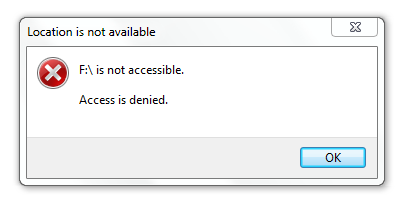External Driver (Hard Drive) Recovery
Wednesday, May 10th, 2017In this post I decided to send some hard drives to Recover Deleted Data to test their data recovery capabilities. I was surprised what I discovered: they were actually very good. It’s not often that an ‘under the radar’ hard drive recovery company like this are any good. With a bit of digging I found out that they were trained by Data Clinic Ltd, who are recognised experts in data recovery.
My external driver (I think he means ‘hard disk drive’) has some problems and I can not get access to my data.
The lens (I think he means ‘read write heads’) are damaged and are touching the disk not allowing it to spin.
I would like to recover all the data on this external driver.
How much this will cost?
Where do you usually save this data? Do you need a new external driver?
Adjusted my WD MyPassport 1TB from one position to the other (didn’t even drop it) and it stopped working. Making the clicking noise. I need the whole 1TB worth of data recovered (I can send a working hard drive to put it on if need be?) and I am looking for preferably less than £100.
Comment: There is no chance of recovering the data from a mechanically damaged hard drive like yours for anything less than £395 ex VAT
Windows Safe Mode Problems
Installed Windows Media Pack 3 which caused the computer to not boot. Couldn’t get it to start even in safe mode. Did a system recovery which unfortunately restored the computer to factory settings so I lost all my data

My external hard drive is not working. My computer recognises that it is connected to the hard drive and the light goes on and a whirring sounds is heard but nothing appears on the screen. I have two external drive like this.
I have a 1TB Samsung M3 portable hard drive with photos, films and music on it. The PC and a Sony Blu Ray player are not recognising the hard drive when it is connected. When connected to the PC or Blu Ray Player, the blue light comes on the hard drive, then flashes three times, then goes off. The disk then stops spinning. Sometimes the blue light stays on and the disk spins but the computer or blu ray player do not recognise it
I’ve tried a different cable and on 2 different PC’s but still the same problem. I’m not sure if it’s been dropped, been in close proximity to magnets (my son may have played with magnets near it? unlikely though) or whether there is a problem with the driver. I’ve had it about two years. Just before the problem started, I plugged it in at work and my work computer did a ‘scan and fix’ but then said it didn’t need fixing and it opened okay. I work in Putney/Wandsworth so quite near the Data Clinic Chiswick office if that helps.
Recover Deleted Data were able to assist with sorting out the hard drive problems on all the above cases.

 My dad accidentally deleted my pictures off my external hard drive a while back but i havent used it since, would I be able to get them back? Also how much does it cost
My dad accidentally deleted my pictures off my external hard drive a while back but i havent used it since, would I be able to get them back? Also how much does it cost I called Datlabs to ask them about their new web site and how they are fairing in the complex world of data recovery. “We have seen a huge upturn in the amount of work being sent in to us where portable and external USB hard drives have broken” said Datlabs tech wizard Ashley Gomes. “Whereas only 5 years ago we would see comparatively few external and portable data storage devices, we now see an increase of almost 5 fold.”
I called Datlabs to ask them about their new web site and how they are fairing in the complex world of data recovery. “We have seen a huge upturn in the amount of work being sent in to us where portable and external USB hard drives have broken” said Datlabs tech wizard Ashley Gomes. “Whereas only 5 years ago we would see comparatively few external and portable data storage devices, we now see an increase of almost 5 fold.”
 Security is an important concern for any business. Having a strong security system is not only important in terms of deterring and preventing theft, but it can also be an important factor in determining your insurance premiums. Businesses need to worry about theft by local gang bangers as well as employees with access to inventory and the cash register. Even a full time security guard does not have eyes in the back of his head. To get the most comprehensive surveillance possible, you need video monitoring. CCTV DVR systems represent a great system towards these ends.
Security is an important concern for any business. Having a strong security system is not only important in terms of deterring and preventing theft, but it can also be an important factor in determining your insurance premiums. Businesses need to worry about theft by local gang bangers as well as employees with access to inventory and the cash register. Even a full time security guard does not have eyes in the back of his head. To get the most comprehensive surveillance possible, you need video monitoring. CCTV DVR systems represent a great system towards these ends.
